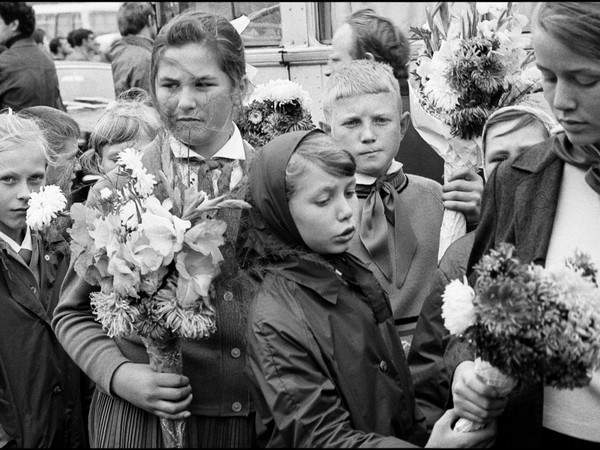Tremezzo, Paola Mattioli at Villa Carlotta with exhibition Four rooms, four stories
Paola Mattioli. Four Rooms, Four Stories is a carnet de voyage recounting the infinite trajectories of the imagination of a photographer who seeks poetry in lightness. Paola Mattioli’s (Milan, 1948) exhibition is on view at Villa Carlotta in Tremezzo from June 18 to Sept. 4. Four elegant and essential rooms on the second floor of Villa Carlotta tell about as many subjects dear to the author, who sees the image as the evocation of a deep and all-embracing emotion, where technique hides behind in apparent simplicity to capture the essence of expression. The exhibition presents 66 photos (60 in black and white and 6 in color) made from 1970 to 2019, where each shot is the story of a privileged relationship with an object, a person, with a sensation that crystallizes the moment intensity becomes the cipher of her style. The room dedicated to the relationship with Aldo Mondino will feature artworks and notebooks that testify to the continuous exchange of ideas in search of his own stylistic cipher.
Curated by Luca Violo, with the collaboration of Giulia Berti for the layout and Andrea Di Gregorio for fundraising, the exhibition, besides being a tribute to a protagonist of Italian photography from the 1970s to the present, aims to tell a path of rigorous and creative research, which makes Paola Mattioli an original witness of her own time through images that are always contemporary in their essential synthesis.
The exhibition is marked by the succession of the four rooms of Villa Carlotta: Flowers for... The 12 photos (1972-1996) are a moving tribute to remembrance, which through the image takes shape beyond the transience of experience. The dearest affections, whether personal, literary or political, confront the photographic aperture that makes it impossible for the deepest memories to be forgotten; Mattioli/Mondino recounts in 12 shots and objects of affection, works of art and albums ofnotes (1983-1993), the artistic vicissitudes of two people who travel the spaces of creativity with the same passion that leads them to search for new languages in the signs and images of their poetic world; Statuine is a series of 10 images (1985), a tribute to the beauty that through fixity sculptural fixity transcends time, a gaze turned to infinity and a body that rises above the surface become an opportunity to confront artifice, that exercise of making the real verisimilar through the imitation of nature; Portraits is the theme of a research that began with the vital and intense face of Giuseppe Ungaretti in 1970, and continues even now with the same curiosity to learn that drove Paola Mattioli in her early twenties to attend the studio of Ugo Mulas. It consists of thirty-two photographs (1970-2019) portraying famous figures from the world of art and design, such as Emilio Tadini, Luigi Serafini, Alessandro Mendini, Bruno Munari, Ron Arad, and Ingo Maurer; from cinema and theater, such as Peter Ustinov and Angela Finocchiaro; from music, such as Milva and Fabio Treves; but also from friends, intellectuals, and people who have enriched her human and professional experience.
At the conclusion of the exhibition two video interviews will be shown where Paola Mattioli tells her story with enthusiasm and sincerity, aspects of her character that we also find in her photographic gaze.
Simona Ghizzoni as part of Fondazione Forma per la Fotografia ’s project Selfportrait as Myself - a series of monthly online meetings dedicated to the theme of identity and self-portrait in photography - spoke with Paola Mattioli about how photography can become a mirror with which to investigate, discover oneself, dig deep and define one’s subjectivity, while Alessia Locatelli in Red Lab Gallery’s show Orientarsi con le stelle (Orienting Yourself with the Stars ), gets her take on how to witness the evolution of history through photography, seen as the social, cultural and human engagement of a person who wants to live fully in the present.
On Saturday, June 25, July 23 and September 3, 2022 at 3 p.m. there will be a special guided tour of the exhibition with the author, Paola Mattioli, and the curator, Luca Violo. The tours will be free of charge, included in the Villa Carlotta entrance ticket with which you can access the exhibition Paola Mattioli. Four rooms. Four stories.
Paola Mattioli was born in Milan in 1948, studied philosophy and graduated with a thesis on the language of photography. Portraiture, the questioning of seeing, language, female difference, big and small stories (from Africa to Dalmine) are the themes she tackles with a gaze far from classic reportage, with “a subtle distance” that she brings into play “with lightness and rigor. In all his research emerges the constant reflection around the language of photography and the phenomena of vision, the question about the meaning of seeing and photographing: a tenacious red thread that binds all his works to each other,” as one critical intervention happily condensed.
Major exhibitions and publications include: Ungaretti (1972); Immagini del no (1974); Ci vediamo mercoledì (1978); Cellophane (1979); Statuine (1987); Donne irritanti (1995); Regine d’Africa (2004); Fabbrico (2006); Dalmine (2008); Una sottile distanza (2008); Altra misura. Art, photography and feminism in Italy in the 1970s (2015); Cristina Casero, Paola Mattioli, a photographer’s critical gaze, Postmediabooks (2016).
For all information, you can visit the official website of Villa Carlotta.
Pictured: Paola Mattioli, Flowers for Khrushchev, Moscow (1971), giclée print on cotton paper.
 |
| Tremezzo, Paola Mattioli at Villa Carlotta with exhibition Four rooms, four stories |
Warning: the translation into English of the original Italian article was created using automatic tools. We undertake to review all articles, but we do not guarantee the total absence of inaccuracies in the translation due to the program. You can find the original by clicking on the ITA button. If you find any mistake,please contact us.




























